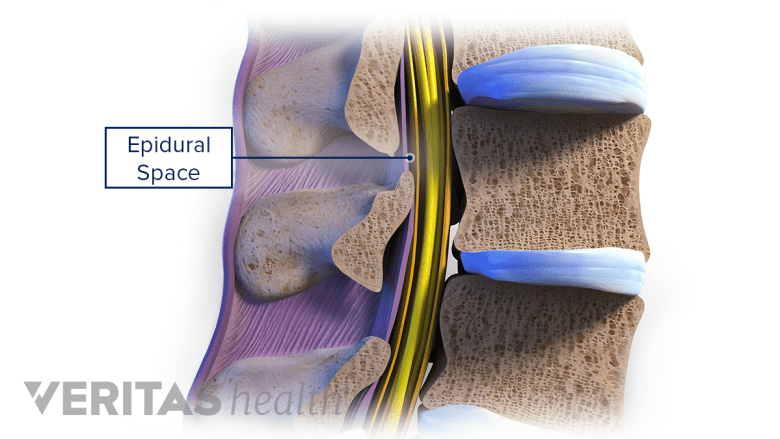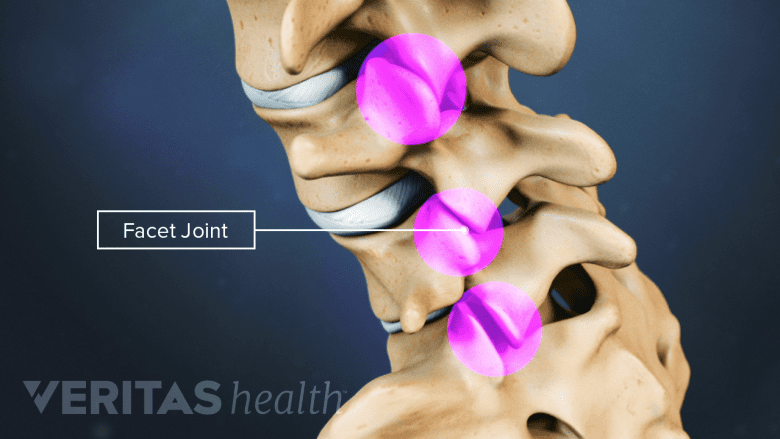Several spinal cord problems may cause typical sciatica signs and symptoms, and while rare, these conditions may cause paralysis or become life-threatening if not treated immediately.
The following are a few examples of spinal-cord-related serious medical conditions that may cause typical sciatica symptoms, highlighting several differentiating symptoms.
In This Article:
- When Sciatica Pain Is a Medical Emergency
- Spinal Cord Conditions with Sciatica Symptoms
- Spinal Tumors and Sciatica Symptoms
- Blood Vessel Conditions Causing Sciatica Symptoms
- Sciatica Causes and Symptoms Video
Cauda Equina Syndrome
This syndrome is caused by the compression of the cauda equina, a group of nerves at the bottom of the spine. The cauda equina extends over part of the lower lumbar spine and the sacrum (triangle-shaped bone at the bottom of the spine). A primary symptom of cauda equina syndrome is sharp, stabbing pain in the legs as in sciatica.1Gardner A, Gardner E, Morley T. Cauda equina syndrome: a review of the current clinical and medico-legal position. Eur Spine J. 2010;20(5):690–697. doi:10.1007/s00586-010-1668-3
Read more about Cauda Equina Syndrome Symptoms
A few differentiating signs and symptoms include some combination of:
- Severe low back pain
- Severe weakness and numbness in the legs making it difficult to stand or walk
- Numbness, tingling, and/or weakness in the groin, genital, and/or anal region
- Partial or complete loss of bowel and/or bladder control or retention of urine
- Sexual dysfunction (often due to numbness in the perineal area)
Cauda equina syndrome may progress suddenly. It is important to treat this syndrome as soon as possible to prevent paralysis of the lower body.
Spinal Epidural Abscess
Abscesses containing fluid or pus can collect in the epidural space and cause sciatica-like symptoms.
A spinal epidural abscess is the collection of pus in the epidural space. This abscess may develop as a result of cells that are carried through the blood from other locations, such as skin or urinary tract infections. The abscess compresses the spinal cord, causing sciatica-like symptoms, usually in both legs.2Alerhand S, Wood S, Long B, Koyfman A. The time-sensitive challenge of diagnosing spinal epidural abscess in the emergency department. Internal and Emergency Medicine. 2017;12(8):1179-1183. doi:10.1007/s11739-017-1718-5
Apart from low back pain with radiating pain in the legs, other signs and symptoms of a spinal epidural abscess may include:
- Fever
- Increased pain when lying down or gently pressing the lower back
- Loss of bladder control
Epidural abscess pain typically worsens with time. The abscess may become larger and spread to other areas if left untreated. Patients with immune deficiency, diabetes, and intravenous drug use may be at an increased risk for spinal epidural abscesses.
Hemorrhagic Lumbar Synovial Cyst
Facet joint degeneration may lead to the formation of hemorrhagic lumbar synovial cysts.
A lumbar synovial cyst is a fluid-filled cavity that usually develops from degenerated facet joints and compresses the spinal cord. They usually develop from abnormal motion within a vertebral segment. In most cases, these cysts are not a medical emergency and may be treated non-surgically. However, if bleeding occurs into the cyst, it is called a hemorrhagic lumbar synovial cyst and is considered a medical emergency.
A hemorrhagic lumbar synovial cyst may cause acute, intolerable pain, numbness, and/or tingling in the lower back and legs, similar to sciatica. If sciatica symptoms become acute or severe, it is advised to visit a doctor.3Park HS, Sim HB, Kwon SC, Park JB. Hemorrhagic lumbar synovial cyst. J Korean Neurosurg Soc. 2012;52(6):567–569. doi:10.3340/jkns.2012.52.6.567,4Cicuendez M, Alen JF, Ramos A, Lobato RD, Lagares A. Spontaneous hemorrhage into a lumbar synovial cyst. Eur Spine J. 2010;19 Suppl 2(Suppl 2):S190–S192. doi:10.1007/s00586-010-1332-y
The above list is not comprehensive; anyone with severe or concerning sciatica signs and symptoms is advised to consult a doctor.
- 1 Gardner A, Gardner E, Morley T. Cauda equina syndrome: a review of the current clinical and medico-legal position. Eur Spine J. 2010;20(5):690–697. doi:10.1007/s00586-010-1668-3
- 2 Alerhand S, Wood S, Long B, Koyfman A. The time-sensitive challenge of diagnosing spinal epidural abscess in the emergency department. Internal and Emergency Medicine. 2017;12(8):1179-1183. doi:10.1007/s11739-017-1718-5
- 3 Park HS, Sim HB, Kwon SC, Park JB. Hemorrhagic lumbar synovial cyst. J Korean Neurosurg Soc. 2012;52(6):567–569. doi:10.3340/jkns.2012.52.6.567
- 4 Cicuendez M, Alen JF, Ramos A, Lobato RD, Lagares A. Spontaneous hemorrhage into a lumbar synovial cyst. Eur Spine J. 2010;19 Suppl 2(Suppl 2):S190–S192. doi:10.1007/s00586-010-1332-y







